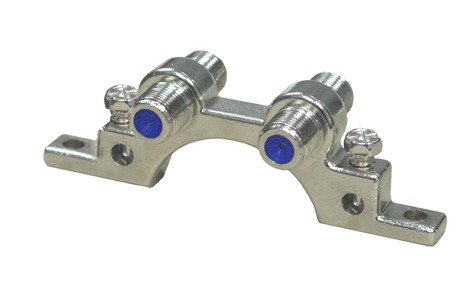This is the question that was put to me this morning. I thought it would make a good article. I talk a lot about grounding, but even as much as I mention it I don’t think I talk enough about grounding. It’s also been a while since I got back down to basics. So let’s go there first, then I’ll answer the question.
Shocking, I know
The whole thing starts with static electricity. I could write a whole article about the different types of energy out there, and maybe I will some day. But when we’re talking about grounding, the discussion really starts with static electricity. Everyone understands static electricity on a basic level. If you walk across carpet on a dry day, then touch something made of metal, you’ll get a little shock.
As your feet drag across the carpet, they build up a small electrical charge. That charge doesn’t want to stay with you, because, well, you’re not a battery or a wire. It’s happier traveling to something with lower resistance. When you get very close to something made of metal, the electricity drains from you and goes to it. You feel a little zap.
Now imagine the whole thing on a massive scale. Instead of feet and carpet, you have masses of air rubbing against each other. When they build up enough static electricity, that electricity wants to drain away. Sooner or later it finds a path to drain into the earth. Usually this is through the tallest thing it can find with the least resistance. This could be a tree, it could be a satellite dish, or it could be you.
Grounding, bonding, surge protectors, and lightning arresters
People confuse these things because we all know they have something to do with keeping things safe, but we don’t really know what.
Grounding and bonding
Grounding and bonding are pretty much the same thing. It’s a way to provide a safe method for excess electricity to drain off, through a wire. Grounding is when you do it directly into the earth or into something like a cold water pipe that goes directly into the earth. Bonding is when you connect to an existing grounded thing, like a breaker box. Not much difference when you think about it.
Surge protectors and lightning arresters
Again, here you have two things that essentially do the same thing, but in this case it’s a matter of scale. If you think of electricity as being like water, then a surge protector is like a coffee filter. It slows down the flow and provides a place for the electricity to back up while it’s flowing. This keeps everything on the other side a lot safer.
Lightning arresters do pretty much the same thing but they’re designed to handle massive amounts of electricity. For the most part, lightning arresters don’t have a place in the satellite or antenna world. Surge protectors don’t really either, but some installs will use them, like cell phone signal boosters. They can interfere with high frequencies which is why satellite systems don’t use them.
Don’t think it’s a lightning rod
This is another confusing thing that people will believe. In the 18th century, scientists proved that you could keep a house safe by putting a metal rod on the top and running a wire to the earth. Now, this also sounds like grounding, but again it’s a matter of degree. In order to contain the electricity from a lightning strike you need a wire about, oh, an inch thick. That little grounding wire won’t do it.
So what does grounding do? It stops static electricity from building up around your house in the first place. By giving electricity a constant place to go, it keeps the buildup from happening. This means that when a lightning strike does come, it’s going to find a different path into the earth. Think of proper grounding almost like an invisibility cloak. If it’s done right, the lightning won’t even see your house, and it will look elsewhere.
Now onto the part that you actually came here for
Proper grounding of a satellite dish involves running the cables to a ground block like the one at the top of this article. Some ground blocks have one line in, some have several. A ground wire runs from the ground block to the earth or to the bonding system of the building.
But do you need to attach every wire to a ground block? Welllll, not really. When it comes to grounding, it’s more important that you do it than that you do it perfectly. The thing is, though, why wouldn’t you?
Generally speaking, ground blocks are dirt cheap. (See what I did there?) Using them isn’t hard, and it is going to give you a little more security. They are simple to install, too. So what if you end up paying oh, about $5 more for enough grounding supplies for every cable? And that’s the bottom line. There’s a chance it’s going to help and it’s cheap and easy, so why wouldn’t you?
Shop now for grounding supplies
Solid Signal has the best selection of grounding supplies for every installation. It doesn’t matter if you’re a weekend DIYer or someone who makes a living doing commercial installations. Shop now to find everything you need!





